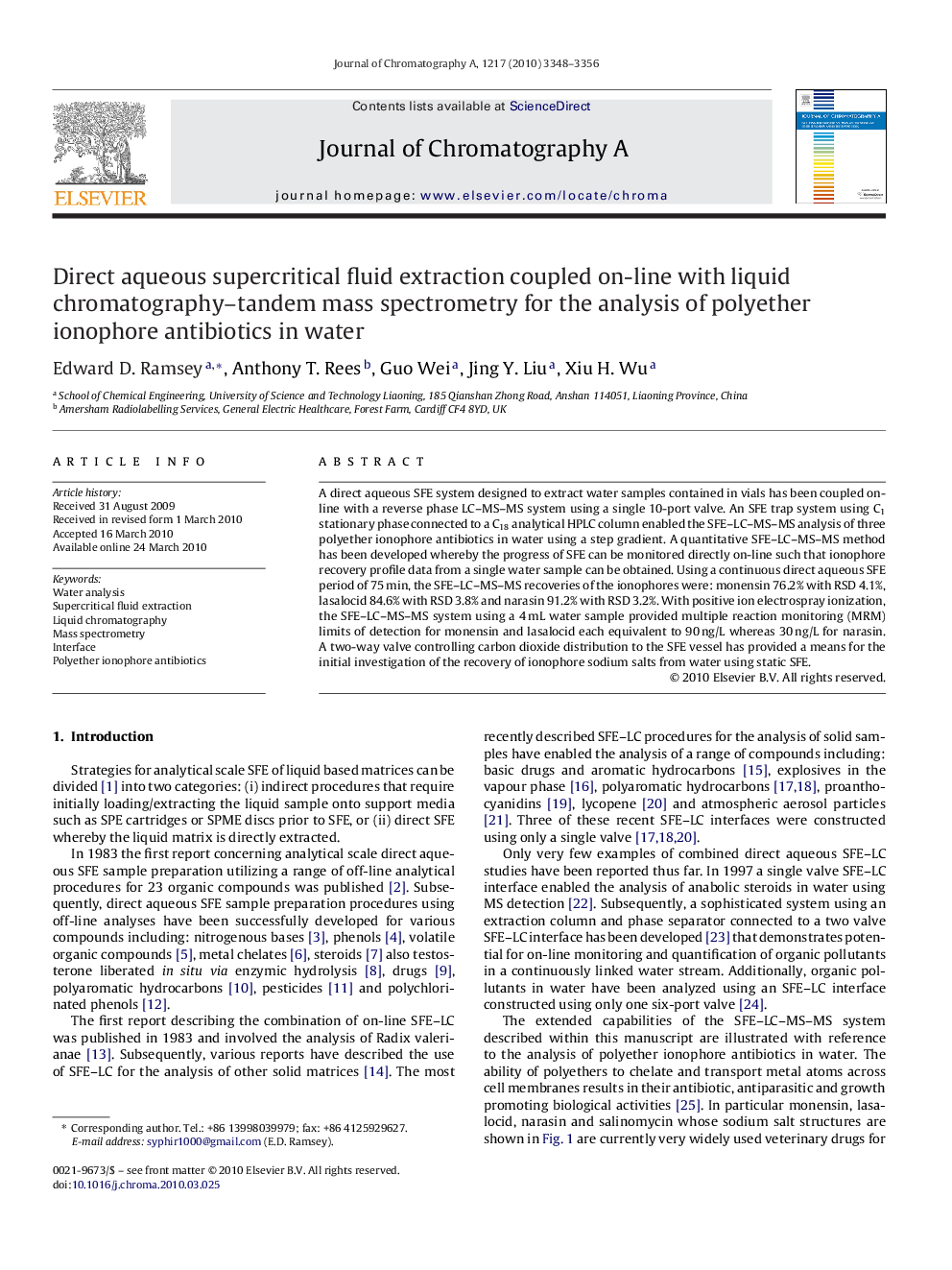| کد مقاله | کد نشریه | سال انتشار | مقاله انگلیسی | نسخه تمام متن |
|---|---|---|---|---|
| 1209282 | 965336 | 2010 | 9 صفحه PDF | دانلود رایگان |

A direct aqueous SFE system designed to extract water samples contained in vials has been coupled on-line with a reverse phase LC–MS–MS system using a single 10-port valve. An SFE trap system using C1 stationary phase connected to a C18 analytical HPLC column enabled the SFE–LC–MS–MS analysis of three polyether ionophore antibiotics in water using a step gradient. A quantitative SFE–LC–MS–MS method has been developed whereby the progress of SFE can be monitored directly on-line such that ionophore recovery profile data from a single water sample can be obtained. Using a continuous direct aqueous SFE period of 75 min, the SFE–LC–MS–MS recoveries of the ionophores were: monensin 76.2% with RSD 4.1%, lasalocid 84.6% with RSD 3.8% and narasin 91.2% with RSD 3.2%. With positive ion electrospray ionization, the SFE–LC–MS–MS system using a 4 mL water sample provided multiple reaction monitoring (MRM) limits of detection for monensin and lasalocid each equivalent to 90 ng/L whereas 30 ng/L for narasin. A two-way valve controlling carbon dioxide distribution to the SFE vessel has provided a means for the initial investigation of the recovery of ionophore sodium salts from water using static SFE.
Journal: Journal of Chromatography A - Volume 1217, Issue 20, 14 May 2010, Pages 3348–3356